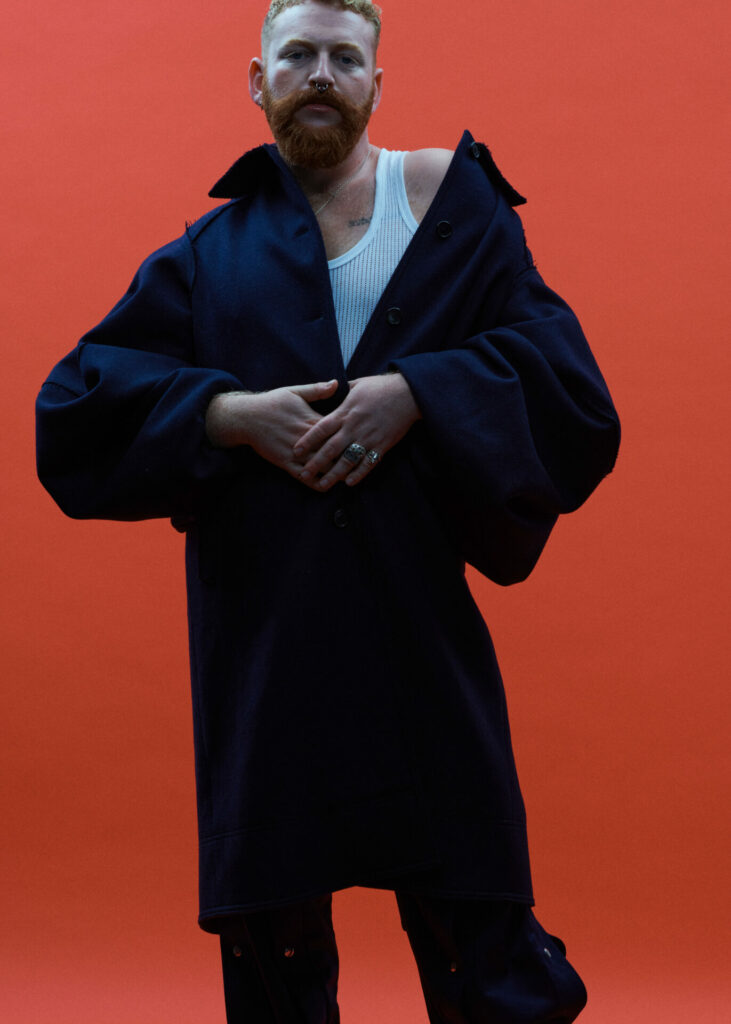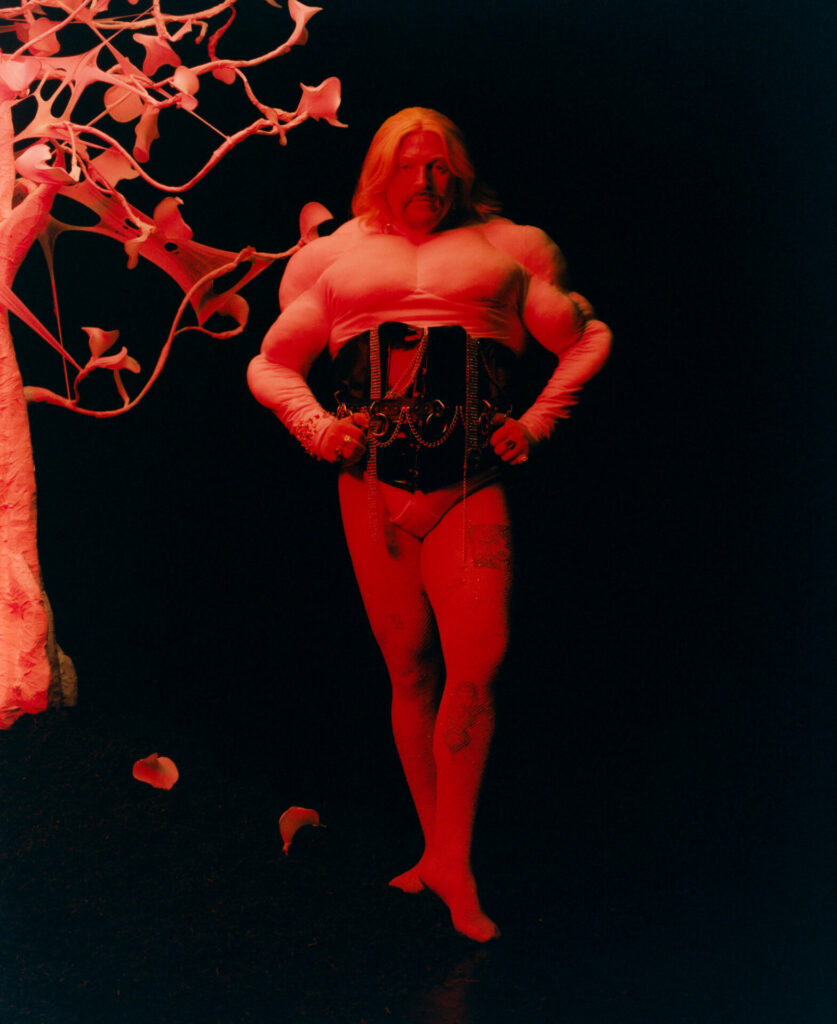Tom Rasmussen’s Body Building review: ‘Unapologetically defiant humanity pervades every beat’
Amrou Al-Kadhi also speaks to Tom Rasmussen about their debut record.

On Wednesday 29 March, singer and queer cultural icon Tom Rasmussen unveiled their debut record Body Building at the ICA, transforming a modest live space into one of transcendental communion.
It felt like an arena show. Compared to the majority of LGBTQ+ events in London, the audience was refreshingly diverse, and the collective experience of basking in Tom’s music felt quasi-religious. Queer people of all shapes and stripes wept as Tom’s physics-defying operatic falsetto pierced hearts.
I’ve often thought of my queerness in spiritual terms, particularly because coming into my identity entailed an escape from religion. It was elating to see a room basking in queer glory in a way that felt spiritual and communal.
The Covid lockdowns were particularly brutal for queer people who find connection and meaning in collective space, and we’ve seen a renewal of the politicality of the live experience as venues opened back up.

That Tom Rasmussen was the support act for Self-Esteem’s latest tour was a perfect pairing/ Both artists treat live gigs as something beyond a simple set list– they are spaces of sanctuary and transcendence, places for us all to connect, feel held and safe in this otherwise precarious world.
When I ask Tom what it is they’re trying to manifest in their live shows, they told me:
“Personally, I wanted to make a space on stage for myself, free of restriction, where I could move in any way that felt natural, because my body and so many queer bodies have been policed by suffocating confines.
“The hope is that the entire experience I’m having spills out into the audience and they begin to feel that too. I’m not really that obsessed with hierarchy between audience and performer, so I guess however the record or the performance, visuals, or sonic are received by the people in the room is meant to be a collective experience of transcendence, euphoria or pain.
“I guess, in a dream world, my shows would be a place where people would feel like they can express a wide range of emotions.”

The songs themselves are able to take up space in a staggeringly corporeal way. The production throughout is celebratory of its tactile process, with Tom’s ad-libs in the studio occasionally bleeding through.
The celebration of collaboration is key to this, with spoken words incorporated by landmark queer figures such as Shon Faye and Travis Alabanza, the meatiness of their speech not finessed or airbrushed for the record.
This gives us an album that feels like it is embracing you. Songs like ‘Seth,’ where Tom rebirths as the “Greek God of Violence,” employs intentionally hyperbolic production that revels in its construction, much like a drag queen in an extraordinary outfit that reveals its illusion – the result is a series of accessible fantasies throughout the record.
Tom brings us imagery and dreams that don’t feel detached or outside our reality – their musical tactility allows us to feel that they are for us.
This tension between metaphor and literalness is a thrilling one throughout. Whilst tracks like ‘Fabulous Opera’ and ‘Fantasy Island Obsession’ revel in the queer tendency to dream beyond the confines of this world, it never feels as if Tom’s music is telling us this world is not for us.

A song like ‘Look at Me,’ for instance, where Tom bypasses imagery to command us to literally “Fucking Look at (Them)” is an instruction that the fantasies built throughout the album are for its listeners to create in the here and now, not some imagined future.
I asked Tom about their decisions to use or refrain from metaphor, and they explained:
“With some songs, it felt like the music part created the metaphor and the tension, the contradiction even, and so sometimes it felt important to make statements about my experience as a queer and trans person trying to navigate a world not designed for me.
“Metaphor is fascinating but only when it’s more effective than the actual words themselves. Some things are too urgent for metaphor.”
Contradiction is at the heart of queer expression, given that we move throughout the world with a sense of galvanised autonomy and a simultaneous vulnerability. This dichotomy is actively celebrated throughout the album.

Some of the most difficult subject matter is executed with uncompromising joy. ‘Street Violence,’ is an ode to the capacity of queer people to survive the brutality of the daily streets. It isn’t one that cowers, but one that breathes a fiery roar – it is an act of celebration in spite of hate. ‘Dysphoria,’ the track which explores the agony of feeling out of place in your sexed body, feels almost like an exorcism – it’s a remedy for dysphoria, a song to be played to help release the pain, rather than to get lost in it.
“In every sense, I was trying to complicate what I already knew about queer trauma, queer joy, queer visibility even,” Tom said. “The point is that the pendulum is constantly swinging between these emotions and they are inextricably linked.
“And so I guess nothing ever felt that delineated, but I do feel like some songs like ‘Street Violence’ weirdly encapsulate queer joy and queer pain at the same time.
“It was enriching emotionally to understand that many things are true at once. I really hope the listener can feel and experience this in the music too.”
Tom Rasmussen’s rigorous intelligence in the construction of this album, and the way that they have mined their deepest vulnerabilities and sublimated them into uproarious anthems, has resulted in a record that is truly original, thrilling, and complicated.
Its reverence for contradiction means it is an album that can be listened to in all kinds of contexts, for its unapologetically defiant humanity is what pervades every beat.
5/5
Body Building is available to stream now.
